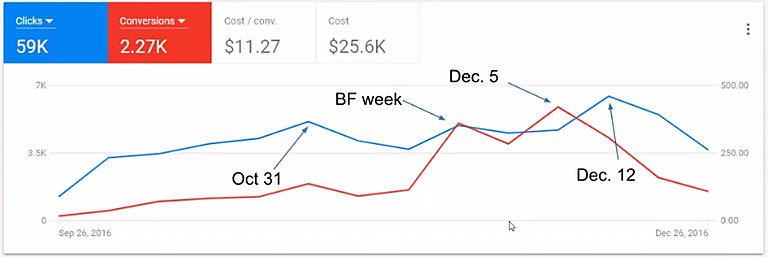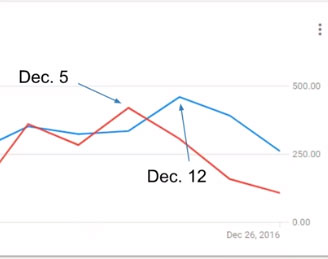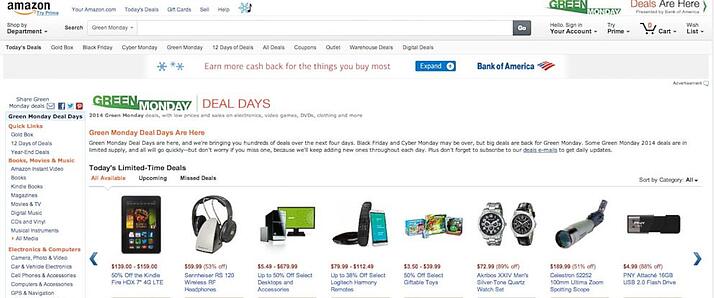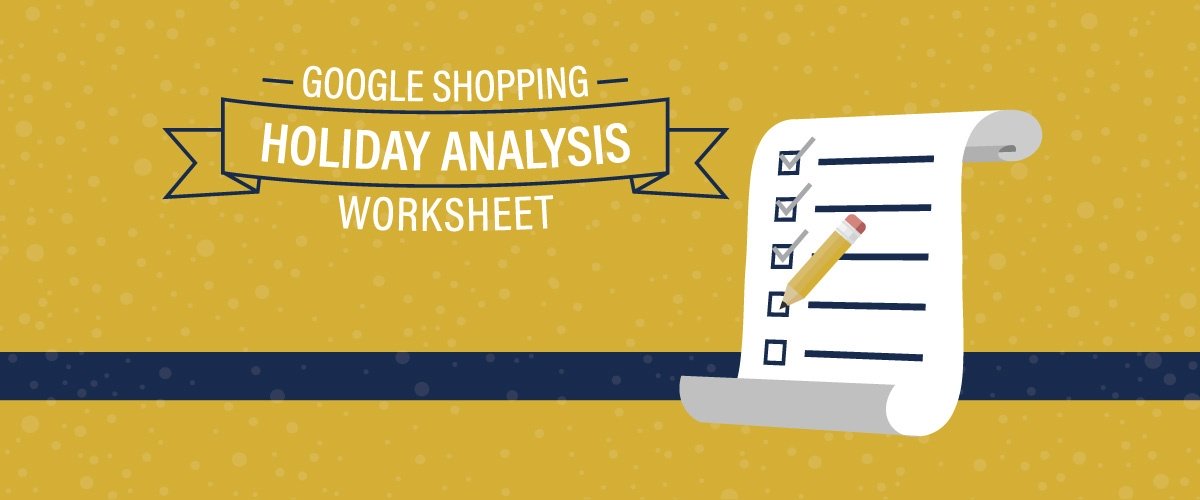The holiday season is a time for giving— and a peak time for buying. The biggest e-commerce shopping days of the year fall within the holiday season, so we put together helpful tips on how to go about your Google Shopping holiday analysis to prepare you for this season. If success is on your wish list, it’s time to get your Google Campaigns locked and loaded for the upcoming holiday madness.
Construct A Plan:
The demand for online shopping has increased year-over-year, and in order to capitalize on this year’s holiday sales, you need a plan for your Google Shopping campaigns. The first step to creating your plan is analyzing last season’s campaign performance to determine the highs and lows to build your new plan upon.
There are a number of variables within Google Shopping that impact campaign performance, both good and bad. The better you can identify those variables, the easier it will be to construct a plan to highlight strengths and minimize weaknesses. Adjust the date range in your Shopping campaigns to October 1, 2016- February 28, 2017 and dissect the following key areas:
General Performance
Use the graph to get an overview of campaign performance throughout the entire holiday season. Think about the goals you created last season and the key performance indicators (KPIs) you identified to measure those goals. Use the drop-downs to compare and further analyze performance among different metrics and establish a data-driven starting point for your new plan of action.
Conversion Rate Changes
If you aren’t tracking conversions, stop your analysis and get tracking set up before you go any further. Get in touch with our Shopping experts to get your tracking in place before the holiday season begins. If you have historical conversion data in your account, look for conversions effected by certain days, weeks, time of day, device, keywords, ads, etc… Make note of patterns, investigate what is causing them, and edit your plan to capture any missed opportunities you may find.
Competition
Take a look at how you set bids last season and how they may or may not have influenced the performance of your campaigns. Did you ramp up bids to keep up with the holiday search traffic or did you leave bids the same? Use the auction insights report to see how your keywords, ad groups and campaigns measured up to your competitors. Make note of how you might have to adjust your bids to stay ahead of your competition this year.

Budget
With an estimated 92% of holiday shoppers researching or purchasing gifts online, your campaigns have potential to capture some serious engagement. It’s important to pair your holiday plan with a substantial budget that can scale with the highs and lows of the holiday shopping season. Pay attention to outside influences, like important dates, and how you adjusted budgets to accomodate the expected performance. Anticipate the outside influences discovered in your analysis and allow your budget to be flexible.
Device Performance
With technology literally at our fingertips, the way we shop has drastically changed. We check our phones an average of 150 times per day, so don’t ignore mobile when planning your campaigns. Explore the “Devices” tab in your account to gauge performance among Mobile, Computers, and Tablets. How did each device perform? Did you miss out on any mobile traffic last season? Explore and implement new, creative strategies to capture users across all devices.

Promotions
In a time of heavy buying, a good promotion can give a visitior that final push towards becoming a customer. Offering something as small as free shipping during a period of high site traffic could make a huge difference, considering 93% of shoppers take action for free shipping. Did you run a promotion last season? How did it perform? Notice dates within your past data that could have performed better with a promotion. Incorporate that idea of a promotion into your plan to capture sales that you may have missed last season.
What To Look For:
Let’s look an example of client that came to Logical Position this year, requesting help preparing for the holiday season. We’ll walk through how we identified a huge missed opportunity in their campaign from last holiday season, and how our analysis will be used to build a more successful plan for this season.

Holiday Analysis Rundown
While Black Friday is a huge day in retail, one of the first things to catch our attention is the traffic volume on October 31st compared to Black Friday week. You can see in the graph above, Black Friday week has a lower volume of searches than October 31st. That increased traffic on the 31st illustrates a large volume of people doing research to prepare for the holiday season. This is an area that stands out as an opportunity to make a better effort to capture that audience of early researchers through branded and remarketing campaigns to keep visitors engaged throughout the holiday season.

When we move along the graph’s timeline, another area of concern is the drastic drop in conversions from December 5th to 12th. A big decrease in conversions as your campaigns run deeper into the holiday season, raises a red flag. The fact that conversions are low, but traffic volume is still high is a clear indication of a disconnect within the campaign. Now, the fun part is asking ourselves, “What caused this huge drop and how can we stop it from happening again this year?”
A big part of your analysis will be looking for factors outside of your campaigns that may have affected performance. For example, important dates in holiday retail. Last year, December 12th was Green Monday, an online retail holiday that falls on the second Monday of December. Green Monday surfaced around 2009 and is now the largest online sales day in December.

The data in our example shows that on December 12th, Green Monday, visitors were spending time on the site, but they weren’t sticking around long enough to make a purchase. It’s likely that competitors were more prepared for Green Monday, and offered enticing promotions that captured visitors looking for the better deal. It’s safe to say, in our example, poor planning is the culprit.
After a basic analysis of general campaign performance, we’ve highlighted two major areas of missed opportunity and found constructive solutions to capitalize on this season:
1. Run earlier branding and remarketing campaigns to capture early reasearchers.
2. Know all of the important holiday retail dates and plan promotions accordingly.
The best place to start your analysis is keeping an eye out for patterns of highs and lows that correspond with certain dates. Use this example analysis to jumpstart your own analysis process and give your campaigns what they need to succeed!
Download our free analysis worksheet below to dive deeper into your historical campaign data to construct the ultimate plan to successfully drive you through the holiday season.





